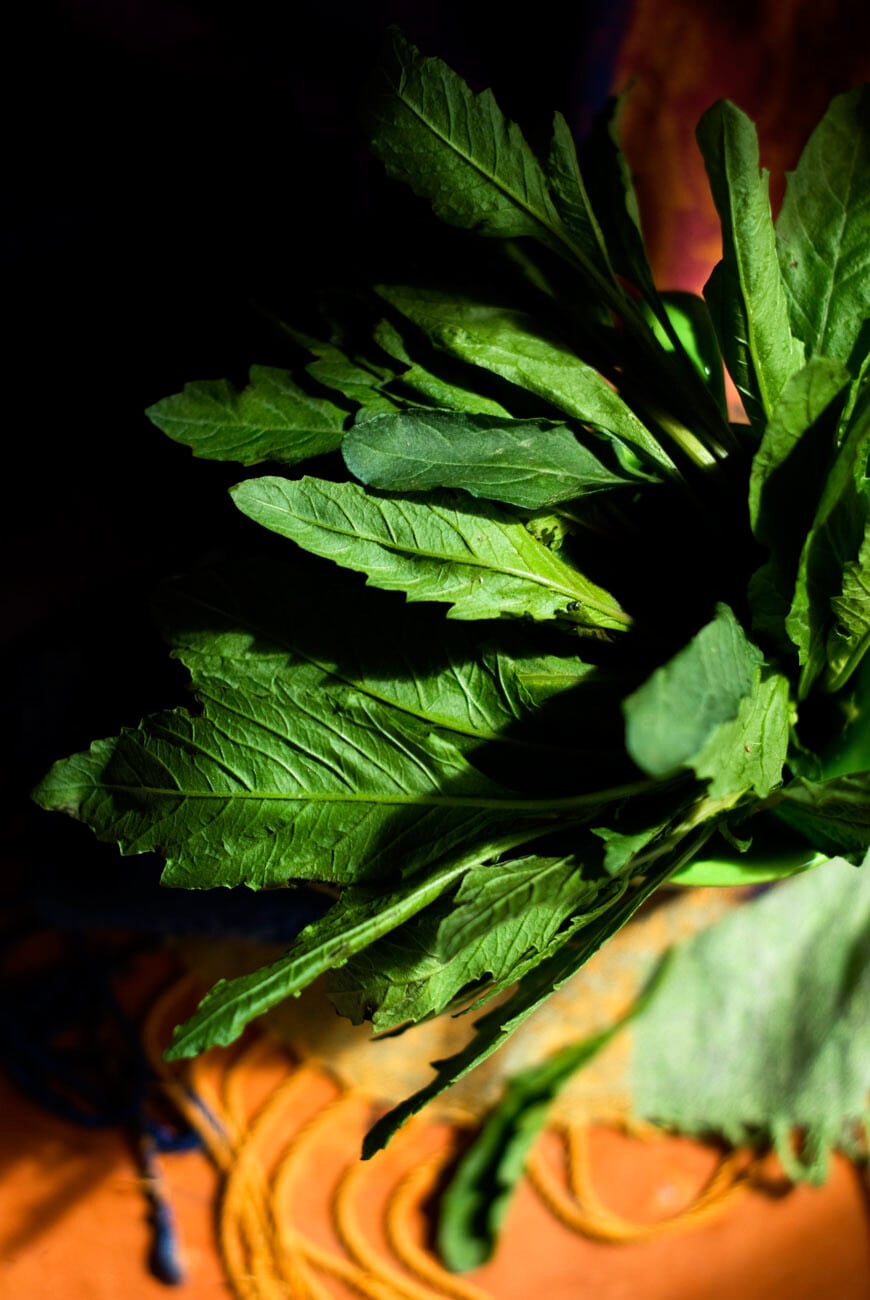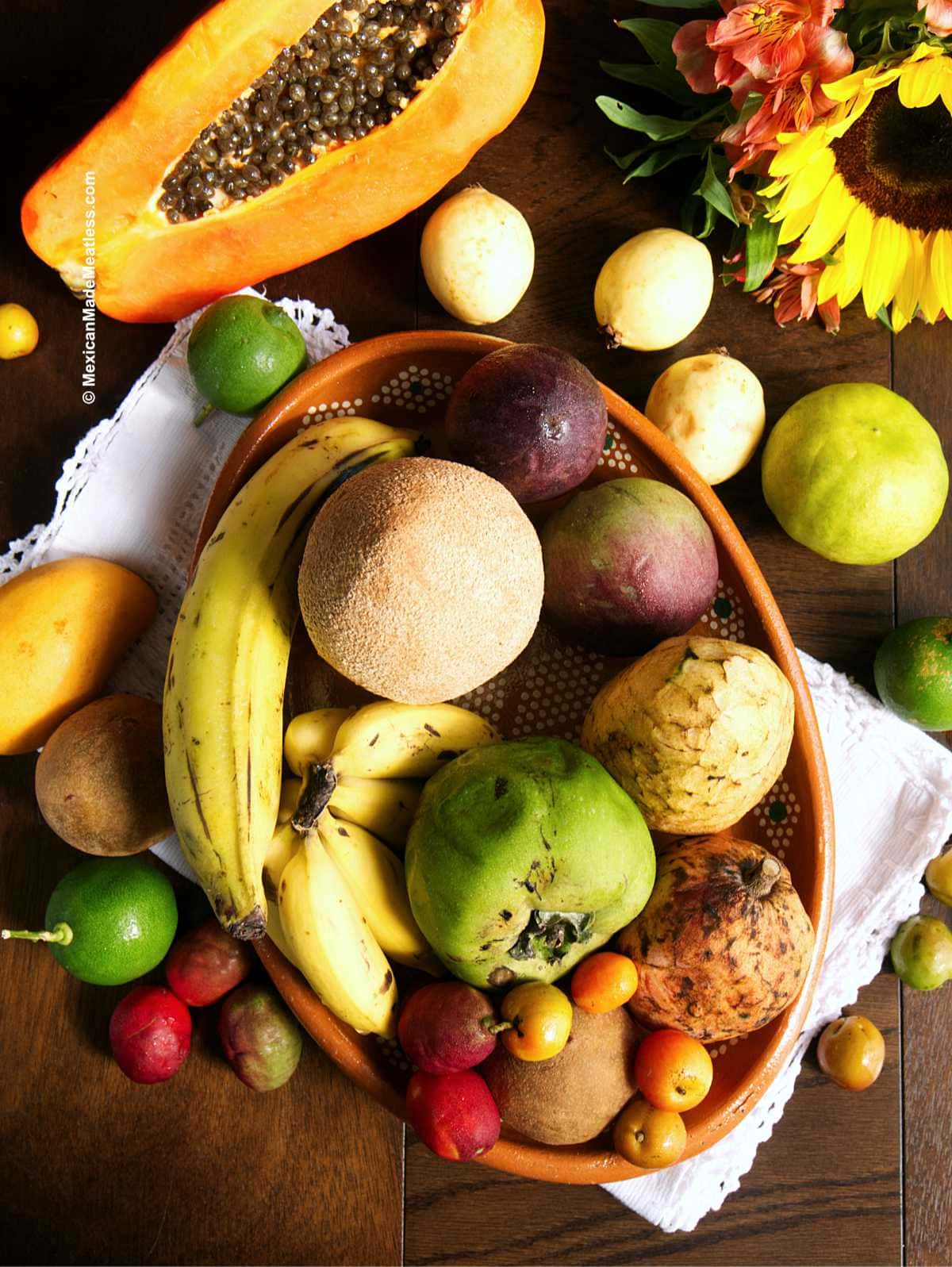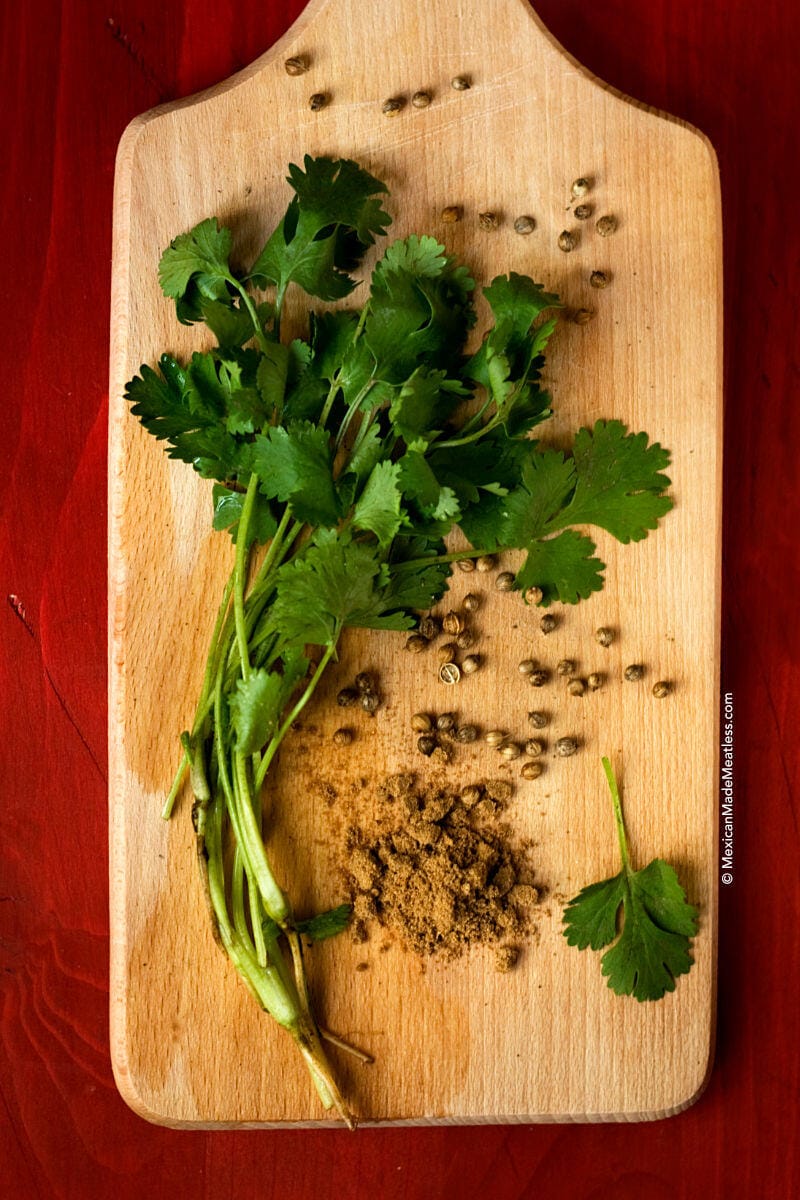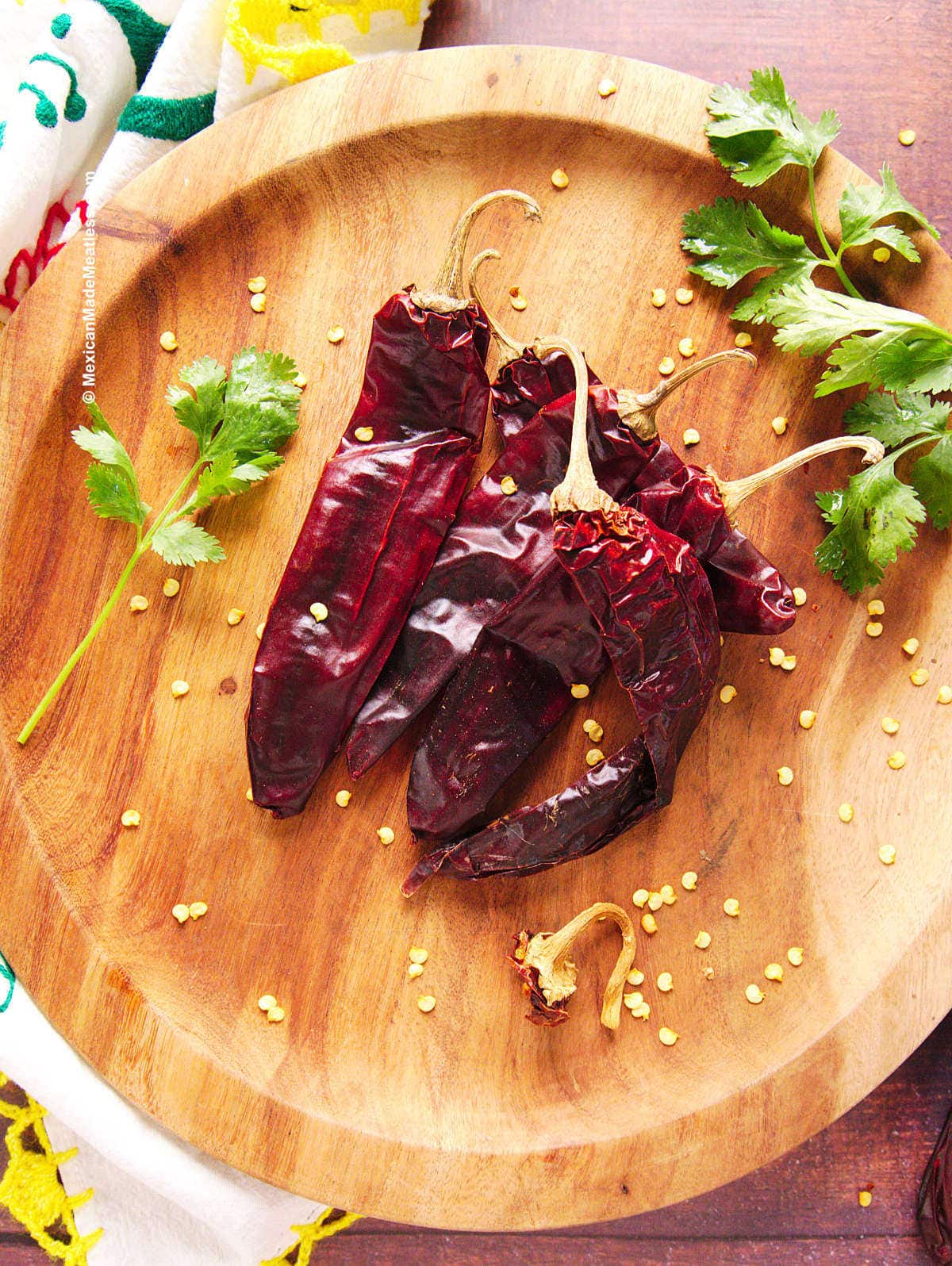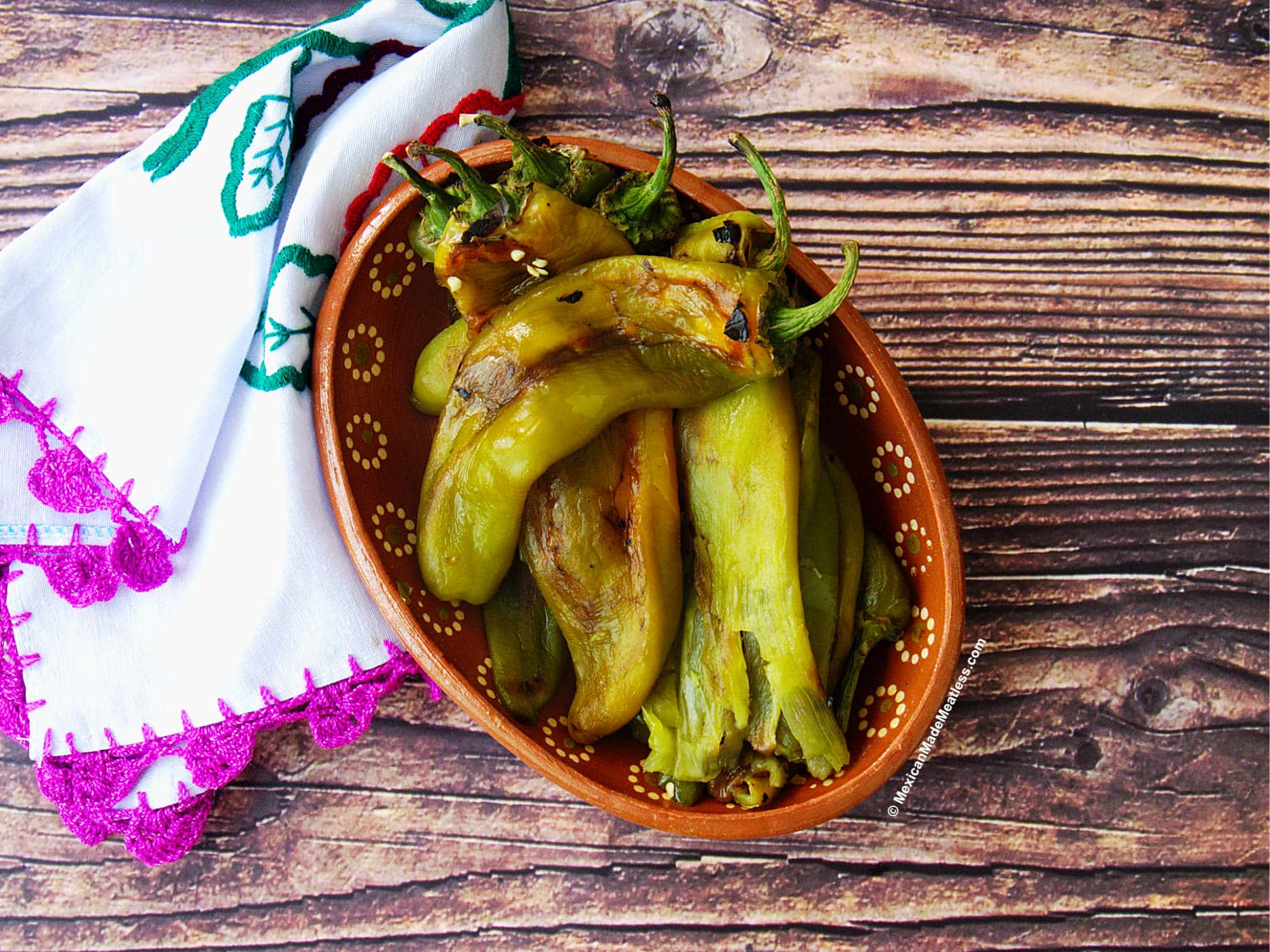23 Essential Tools for Mexican Cooking
From the iconic molcajete for making salsa and grinding spices to the versatile comal for making tortillas, these tools are the backbone of authentic Mexican cuisine. Each one of these essential tools for Mexican cooking are part of the rich cultural heritage and culinary traditions that make up the vibrant world of Mexican gastronomy.
How many do you have in your cocina?
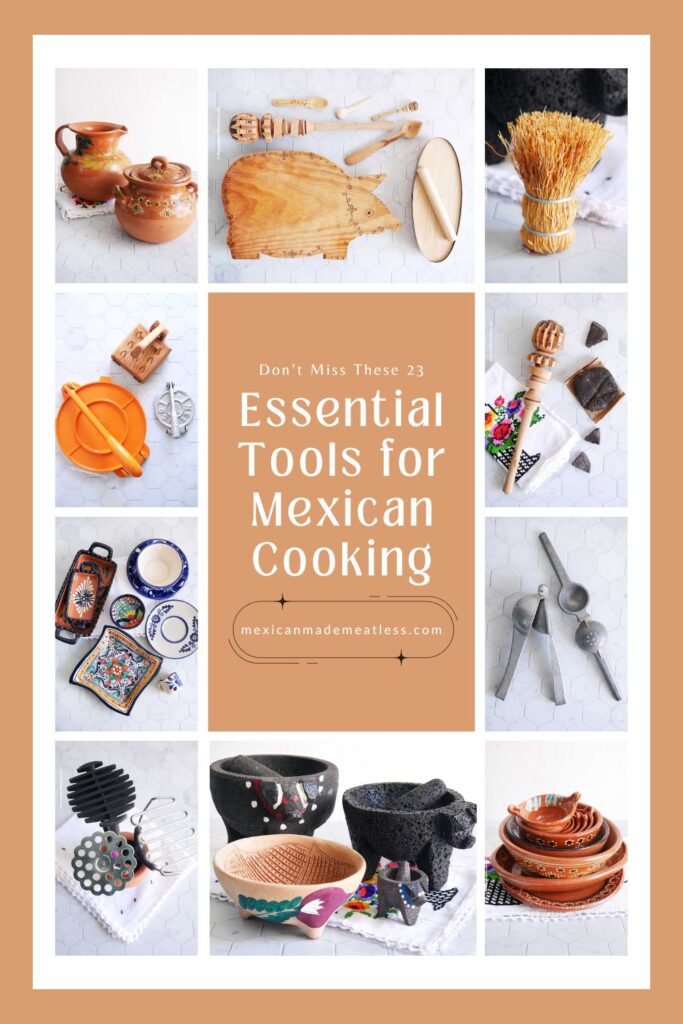
Mexican Cooking Tools Every Home Chef Should Own
Amigos, in order to dive right into the enchanting world of Mexican cuisine, let’s make sure your kitchen is equipped with the essential Mexican cooking utensils that will help you create authentic and mouth watering dishes right at home. Below are some of the many options that you can equip and adorn your kitchen with.
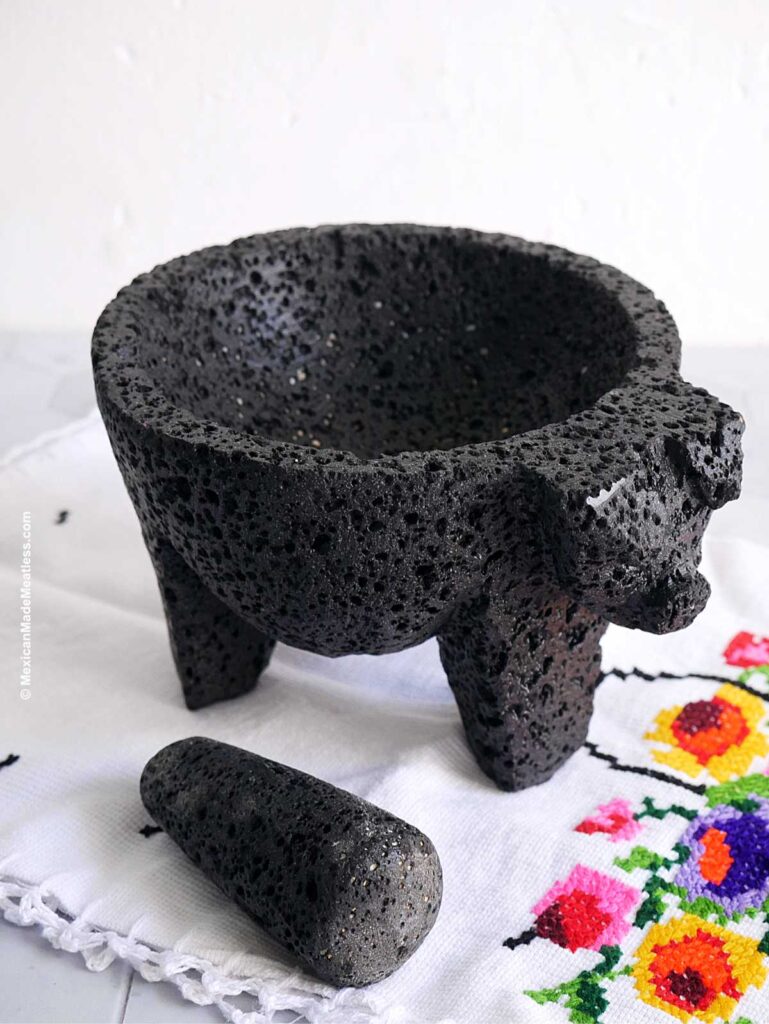
Molcajete or Mortar and Pestle
The molcajete is a mortar made of stone or baked clay with a concave cavity and a pestle known as “pilón” or “mano”. You could call this the traditional Mexican food processor or blender.
It is from pre-Hispanic origin (molcaxitl in the Nahuatl language) and is used to grind spices, pulverize seeds and grains, and other typical ingredients of Mexican cuisine.
Of course the molcajete is also the traditional Mexican tool used to make guacamole and to grind ingredients for making delicious salsas.
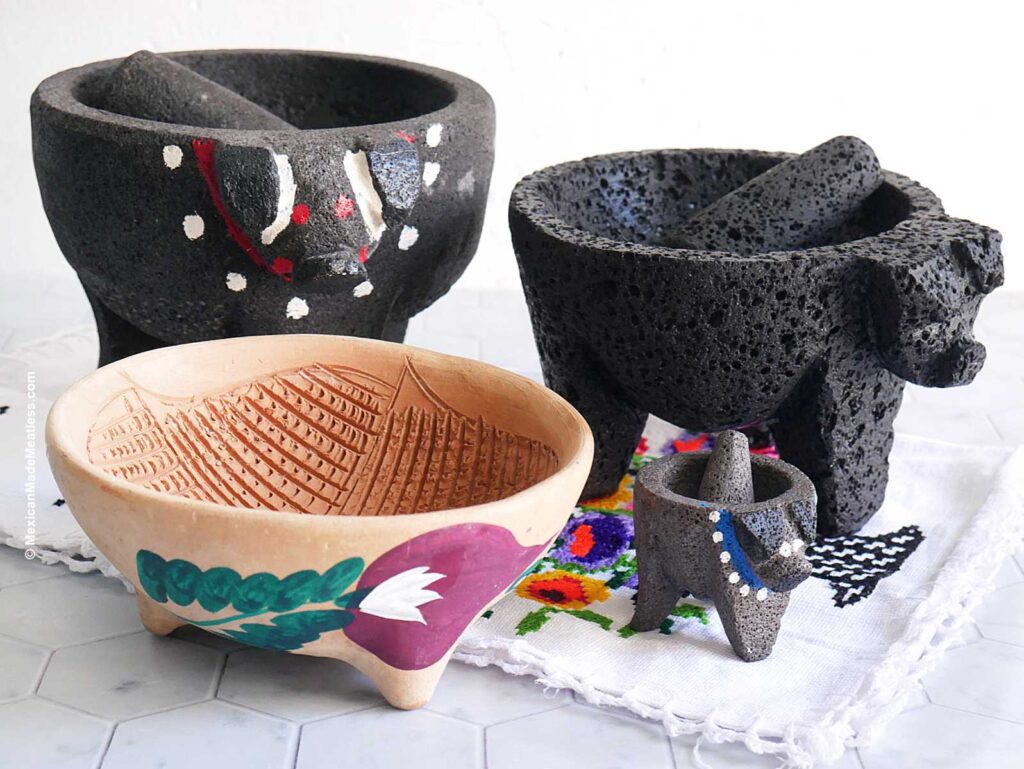
There are 3 types of molcajetes.
- Volcanic Molcajete: The first type is artisanally carved from volcanic rocks such as basalt. They are dark in appearance and have a rough texture. They are also very heavy and the most traditional molcajete.
- Cement Molcajete: The second type is made of cement, which is also heavy but lighter in color and a smoother texture.
- Barro Molcajete: The third type is the one made of baked clay or barro. It is also manufactured by hand and is much lighter and much more fragile than those of volcanic or cement rock. Due to it’s smoother surface these are typically painted with decorative Mexican motifs.
The volcanic and cement type of molcajetes must be seasoned before you can use them. Follow my easy molcajete curing guide. If cured and cleaned properly a molcajete will last you long time or even a lifetime!
Here are some recipes to use your molcajete in: Molcajete Salsa, Guacamole, and Taqueria Style Salsa Roja.

Escobeta de Raiz or Scrubber
An escobeta is an old fashioned Mexican scrubber made of natural fibers that come from the roots of zacaton grass.
It’s stiff and sturdy but not abrasive and traditionally it’s what’s used to clean a molcajete. But it also makes a great scrubber for all types of pots and pans and plates, or anything you’d like. It’s a perfect tool for heavy duty scrubbing.
They are a must in my kitchen and I love how hardy they are, how they don’t absorb smells, dry quicker than synthetic kitchen sponges. And they are biodegradable too!
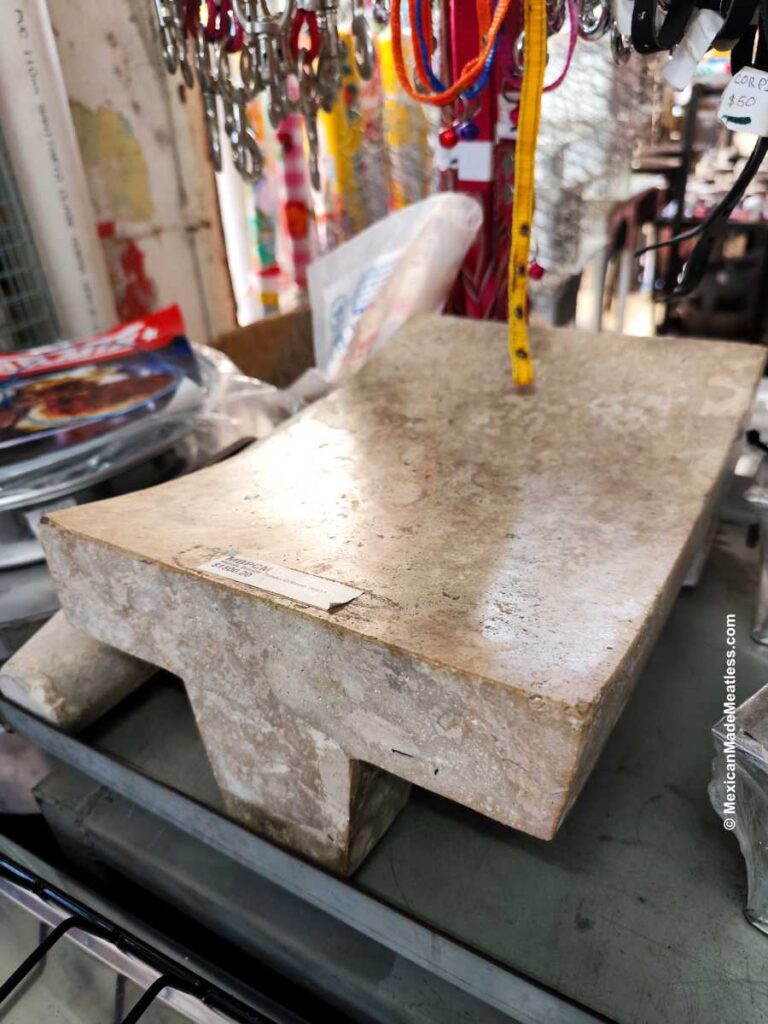
Metate
A metate is another pre-Hispanic tool whose name comes from the Nahuatl word “metlatl” which means “tooth”.
The metate is a slightly concave rectangular shaped volcanic stone (there’s now polished stone too) that slants downward and is held up with 3 legs carved out of the same stone.
Like a molcajete it too makes use of an additional tool to do the grinding. This piece is an elongated volcanic stone with conical ends that allows it to be grasped with both hands. A container or bowl is placed at the bottom to collect the ingredients that were ground.
A metate must also be cured before using.
The most traditional use for a metate is to grind corn to make the masa for homemade tortillas or tamales. But it’s also also to grind chiles and spices to make your own salsa or sauces like mole.
Not everyone has a metate at home but it is a fun tool to use if you want to try the rustic traditional methods. This tool to if taken care of properly will also last a lifetime.
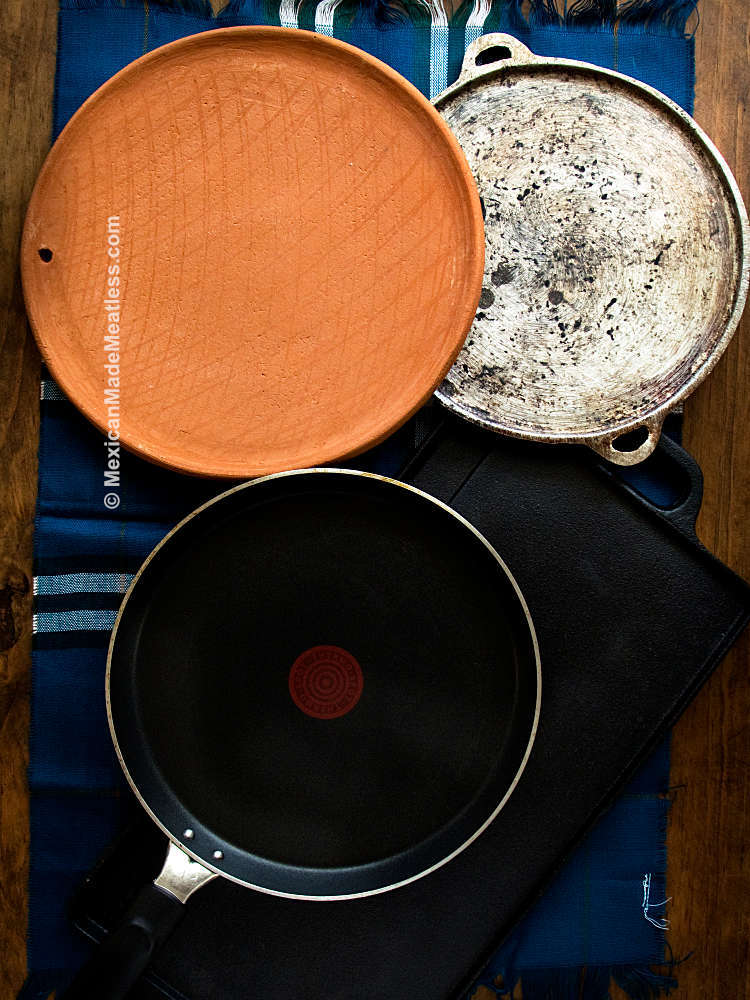
Comal or Griddle
The word comal comes from the old Nahuatl “comalli” and it has been uses since pre-Hispanic times. This handy item is one of the most traditional kitchen utensils in a Mexican kitchen.
The most traditional comales are made of barro or baked clay. In modern times comales can be made of aluminum, aluminum non-stick coating, or cast iron. Traditionally they are round but can also be squared or rectangle.
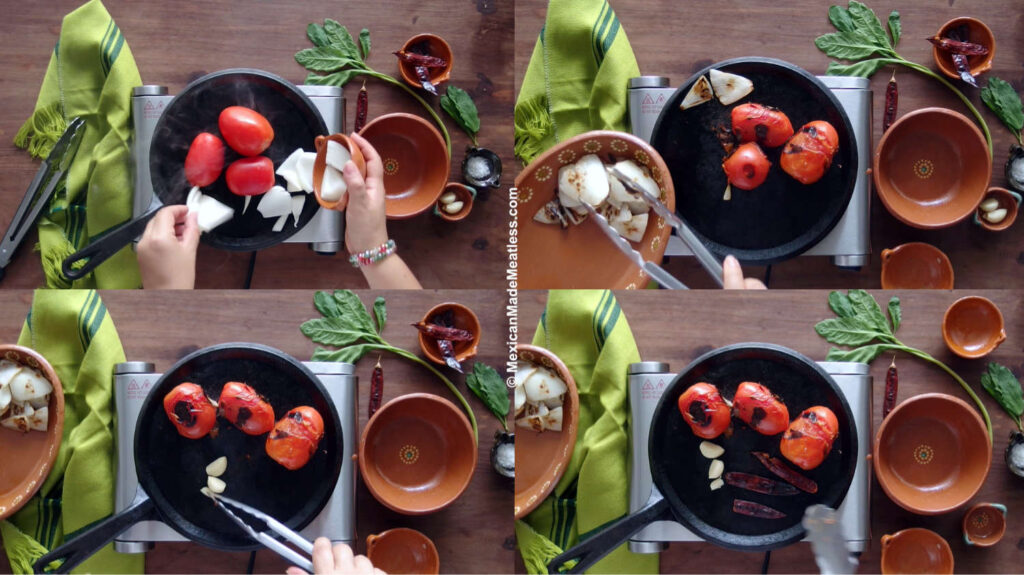
A comal is used to toast spices, to blister chiles, to char ingredients for salsa or mole, but perhaps more commonly to cook and reheat tortillas – though tortillas are also commonly reheated over an open fire on the stove.
This simple yet essential tool is what gives so many vibrant flavors to traditional Mexican cooking methods and dishes.

Tortilla Press or Prensa Para Tortillas
Tortilla presses are traditionally made of wood or aluminum and in more recent years of cast iron and plastic.
As the name describes, it’s a manual press for making your own corn tortillas at home. You can’t use it to make flour because the stretchy consistency of flour tortillas prevent it from being able to be fully flattened.
To use first you need to lay two plastic sheets on the press then place a small ball of corn masa in the middle of the bottom piece of the press. Bring the two press pieces together and firmly press down using the lever to flatten the dough into a perfectly round tortilla. Then you oven the press and peel away the tortilla from the plastic sheets before cooking on a hot comal.
Having a tortilla press is super convenient and will speed up your tortilla making. It’s much faster than using a rolling pin, for sure!
Besides making tortillas you can also use the press to make sopes and gorditas and if you happen to have a larger one you can use it to make quesadillas or tlayudas.

Tortillero or Tortilla Warmer
A tortillero is a container of sorts that’s used to hold and keep tortillas warm after they’ve been cooked or heated.
There are several types of tortilleros but perhaps the most common traditional ones are those made of woven straw material. They can be the natural color or made with colorful dyed straw. Additionally it can be as simple as a small tortilla basket or have a lid. And traditionally it is insulated with a cloth to keep the tortillas warm.
Other types of tortilleros can be made from volcanic rock or ceramic, from wood or from cloth. The cloth types can be as solely a decorative square cloth to wrap the tortillas in. There are also modern ones that are like pockets where you stuff the warm tortillas into.
Tortilleros are a great tool to have when you will be serving warm tortillas with the meal. Or also for taco nights so that everyone can grab a warm tortilla and prepare their taco one by one. This way you don’t risk a soggy tortilla.
You may occasionally see a Mexican restaurant serve tortilla chips inside a tortilla basket.
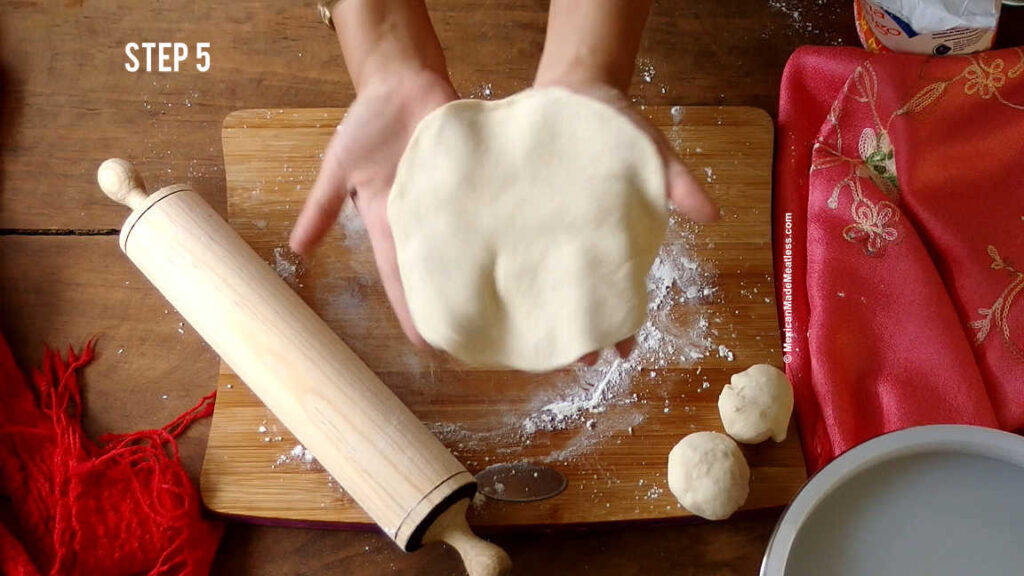
Rodillo or Rolling Pin
A rodillo what we call a rolling pin in Mexico and it’s most popular use is for making flour tortillas. They are traditionally made from wood and can vary in length and width.
A good tip when making flour tortillas is to dust the rolling pin often so that that dough doesn’t stick to the rodillo and you can get nicely shaped tortillas.
It’s very important to keep your rodillo properly cleaned and dry after when storing to help extend their life.

Machacador de Frijoles or Bean Masher
This very handy tool is essential for homemade refried beans (and mashed potatoes)!
It can be made of plastic, metal or wood. The design can also vary, as you can see in the photo above.
My personal choice for smoother refried beans is the round one with the small holes. The others work well too just require a little more mashing to make the beans creamier, if that’s what you’d like.
As far as durability I think the metal ones are the better choice – just be careful on what type of pot or pan you used them because they can cause scratches.
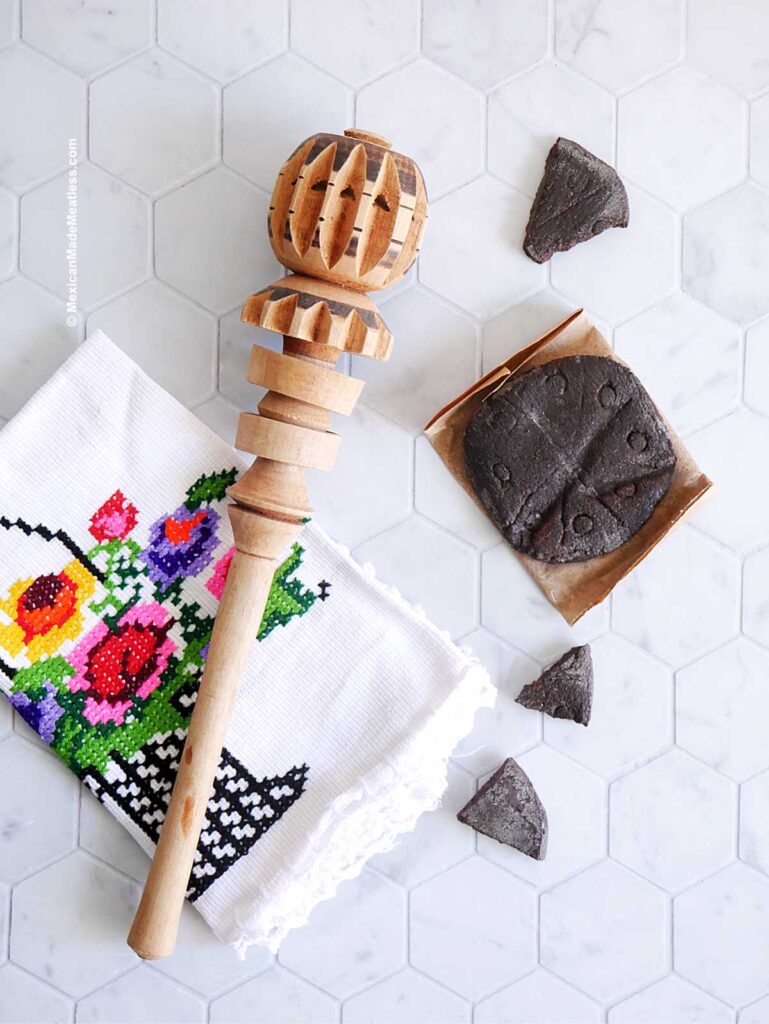
Molinillo or Wooden Whisk
A molinillo is a traditional Mexican frother that is made of wood and is of pre-Hispanic origin, known as “aquahuitl” in Nahuatl.
It is used in the preparation of hot drinks such as traditional Mexican hot chocolate, champurrado and atole. The advantage of frothing hot liquids is to help release their scents and flavors. Additionally it helps to breakup the chocolate tablets used when making these drinks.
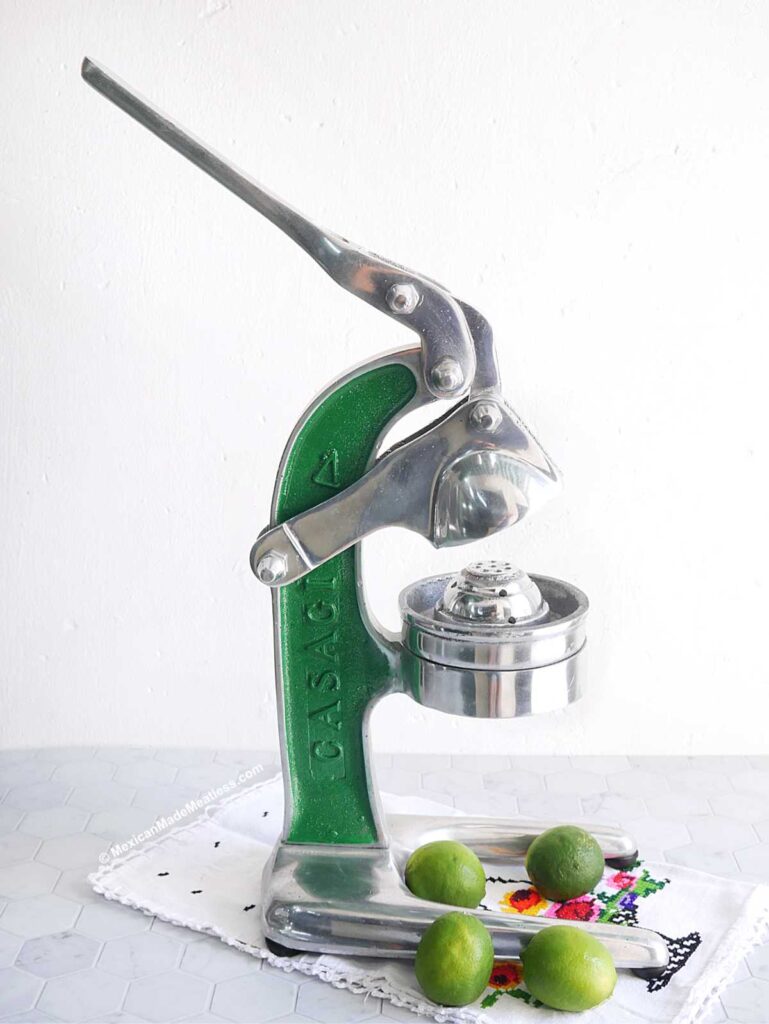
Exprimidor or Citrus Squeezer
It is a kitchen utensil that is used to extract the juice of different types of citrus fruits, such as limes and oranges. There are two different types that vary in use and size.
The most commonly used for limes or lemons is the manual press made of aluminum but these are also made in a high-density plastic. I prefer the aluminum ones for their durability.
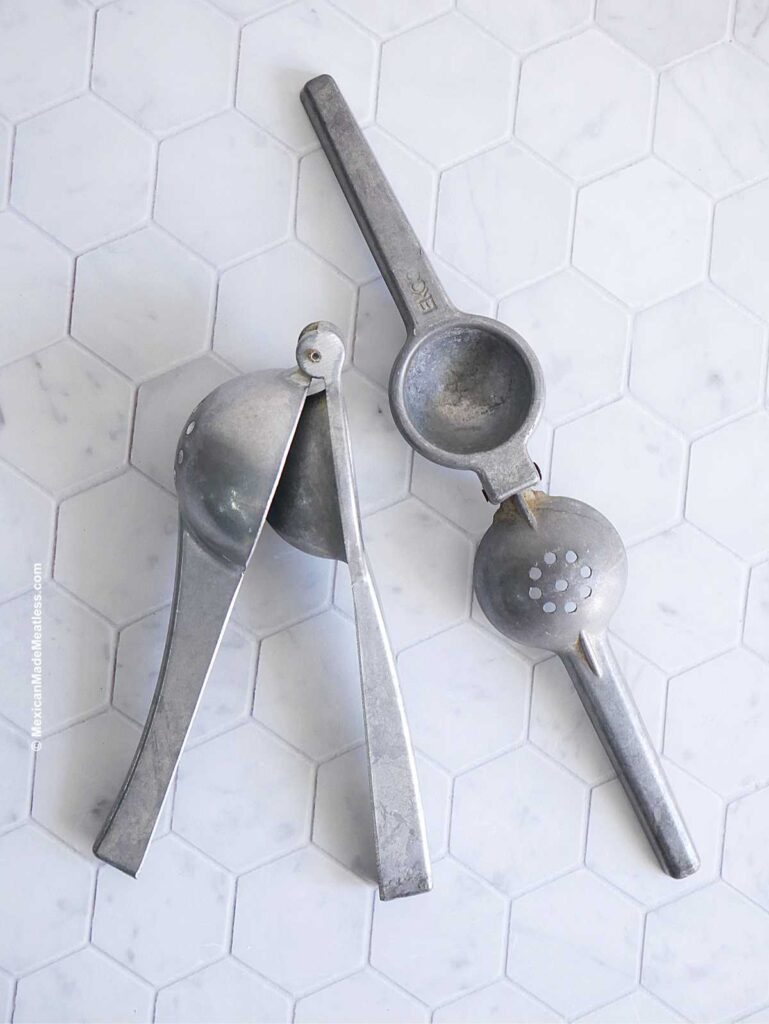
In the case of oranges and grapefruits, a larger squeezer or juicer is used. These are more like an old fashioned metal juicer which a lever is used with force to squeeze out the juice of oranges or grapefruits.
The smaller hand-held ones are good enough for most kitchens.
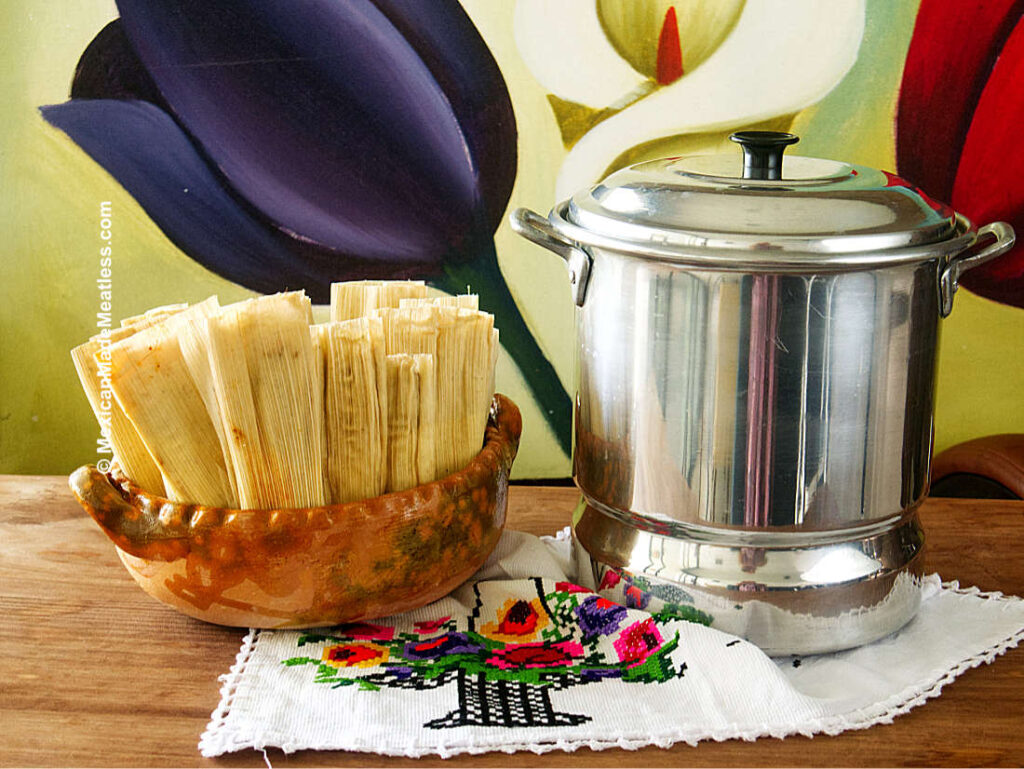
Vaporeras or Tamaleras
Vaporera referrers to a steamer pot and in most cases it’s referring those used for cooking tamales. Another name for this type of pot is vaporera para tamales or tamalera.
These types of Mexican pots have two compartments that are separated by a perforated steaming rack or tray. The steaming tray lays just a short distance from the bottom of the pot in which the water for steaming is held. The tamales are place standing up on the steaming rack then the lid covers the pot.
It is designed so that the water is not in direct contact with the food and is steamed at low pressure.
If you want to make tamales the traditional way then you must get yourself a tamalera. Here is one on Amazon that’s just like mine.
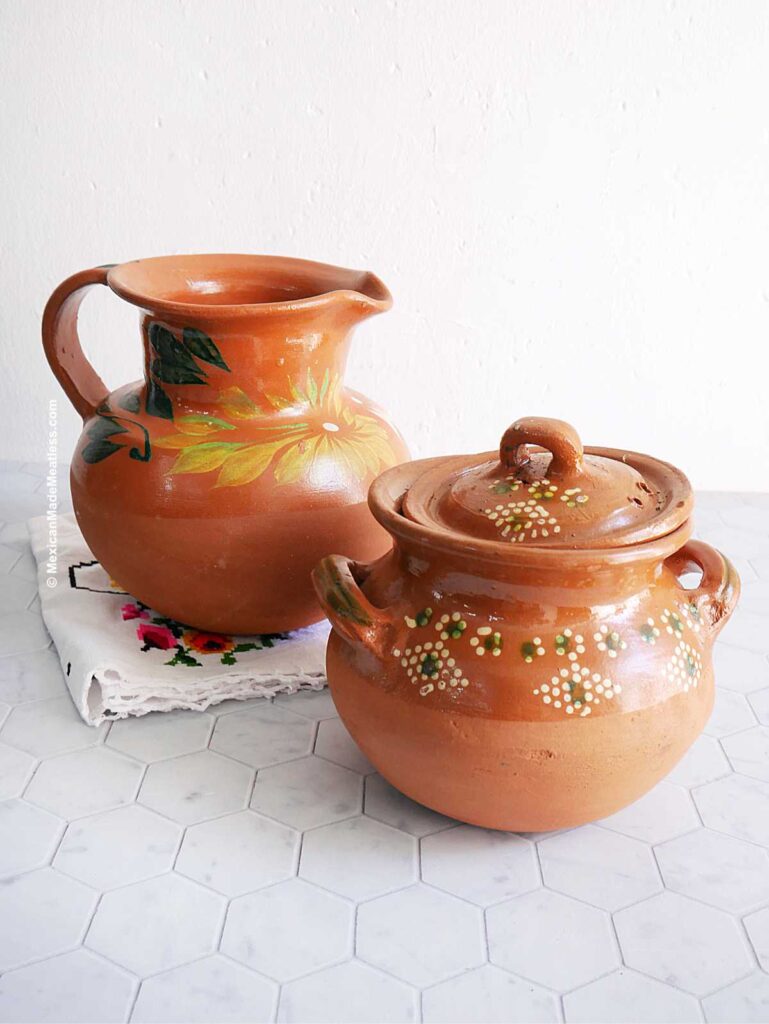
Barro
Mexican barro refers to traditional handmade pottery and ceramics made from Mexican clay ore earthenware. These pieces are often cherished for their rustic beauty and of course their cultural significance in Mexican cuisine and art.
Traditional Mexican cooks say that food cooked in barro (particularly cooking beans) gives it a characteristic flavor that makes it even more delicious. If you’ve ever had frijoles de olla made in a clay pot then you know this to be true.
Please have in mind that any clay cooking utensil should be cured prior to its first use, watch this video to learn how. Additionally, for your peace of mind, you can learn how to test your clay pots for lead by watching this video. There are also test kits available on Amazon.
Also do watch this video by Rick Bayless where he guides you on choosing and using your barro dishes.
One very important detail about your barro pieces is to keep in mind that they are quite fragile. Be careful when handling, washing and storing because it does not resist impact.
However a great benefit of barro is that it withstands high temperatures and can be put directly over a gas stove, coil burners, or smooth stovetops. Make sure the barro has cooled completely before washing it to prevent cracks.
Below are some of the more commonly used barro kitchen utensils you can consider getting for your kitchen.
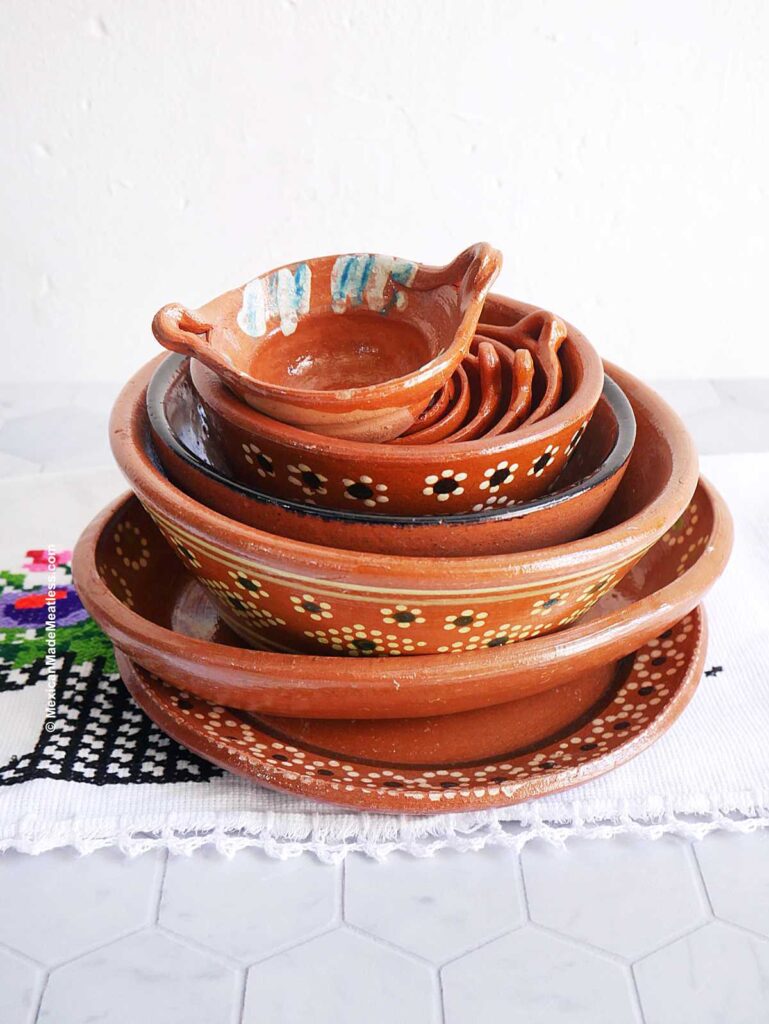
Cazuela de barro: This is a round casserole dish whose diameter is usually greater than its height. It is commonly used for stewing and slow cooking traditional dishes.
Olla de barro: A round earthenware pot that can be different sizes and heights. These are great for making beans and cafe de olla.
Plato de barro: Plato means plate and these gorgeous kitchenware will liven up your dinner table. I use them quite often and you’ll surely see them in lots of the recipes I post here. These are also great because they help keep food warmer longer.
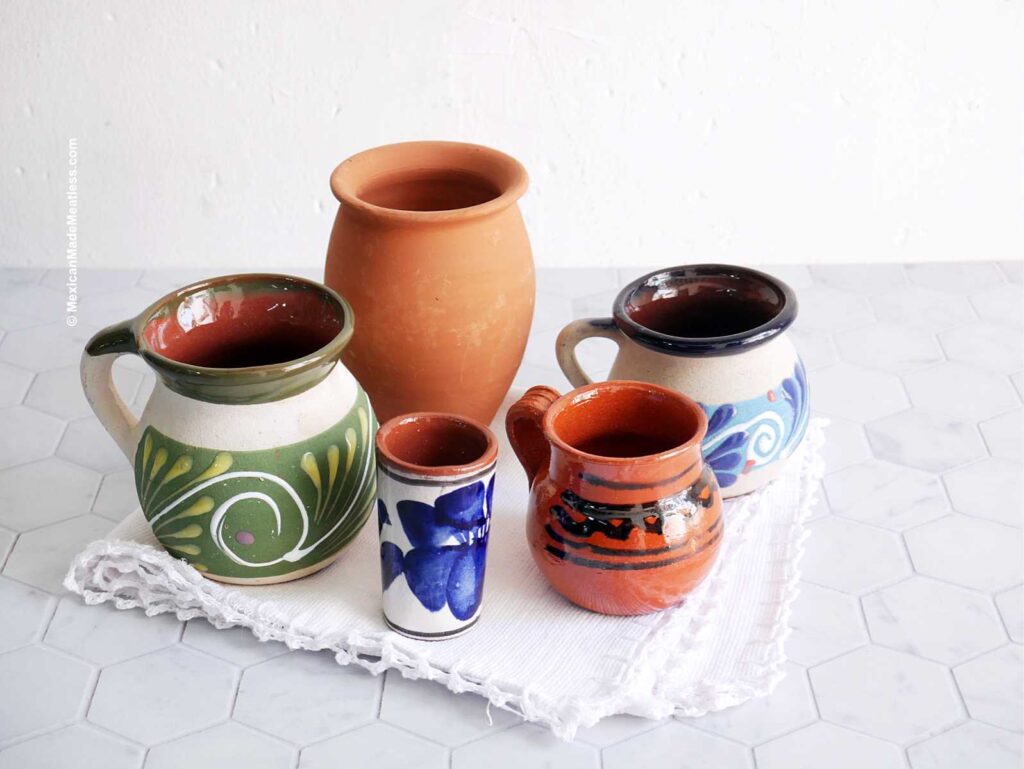
Jarritos de barro: These are earthenware mugs used for serving beverages. There are the glazed decorative ones that are perfect for serving warm drinks like chocolate, champurrado, atole, coffee, and even cold drinks.
If it does not have handles it is called a “cantarito” and these are popular for serving cold cocktails like palomas. They are super cute and are great for holding cutlery on a pretty tablescape.
Cuchara de barro: These decorative spoons are typically used for serving salsas or scooping spices. It’s not very common to see people eating with them nowadays.

Talavera or Mexican Pottery
Talavera is type of Mexican pottery that originated in Spain but has now become very Mexican with it’s vibrant colors and bold designs. Nowadays true authentic Mexican talavera only comes from the regions of Puebla.
You can find talavera plates, bowls, cups, mugs, spoons, teapots, spoon rests, kitchen storage containers, sugar bowls, saucers, napkin holders and pretty much anything else you can think of.
This beautiful decorative artform is also made into kitchen tiles and decorative pieces.
Talavera makes anything served on it that much more special and delicious.

Peltre or Enameled or Porcelainized Cookware and Utensils
Mexican peltre cookware and utensils are enameled coated or porcelainized steel and most commonly have a distinct spotted baby blue hue.
These are still used today but perhaps not as popular as they once were. Growing up I remember my grandparents had peltre pieces in their kitchen.
There is a wide variety available but some of the more commonly Mexican pewter cookware are: pots, pans, plates
Olla de peltre: Pot are probably the most used cooking pot in old fashioned Mexican kitchens. They can be the classic baby blue color or be decorated with various motifs and there’s also many different sizes available.
Plato de peltre: Plate are an excellent option for tableware not only because of it’s beauty but also because it’s lightweight and easy to wash and to store.
Taza de peltre: Cups or mugs that are extremely practical and can be used to heat any liquid directly on the fire or also to be used for drinking. They are impact resistant, light and inexpensive.
Cuchara de peltre: Spoons that come in various sizes and are used for cooking and eating. They are widely used in Mexican cuisine due to their durability and ease of washing. The most common type are those of a marbled blue color and a small hole in the handle so you can hang them.
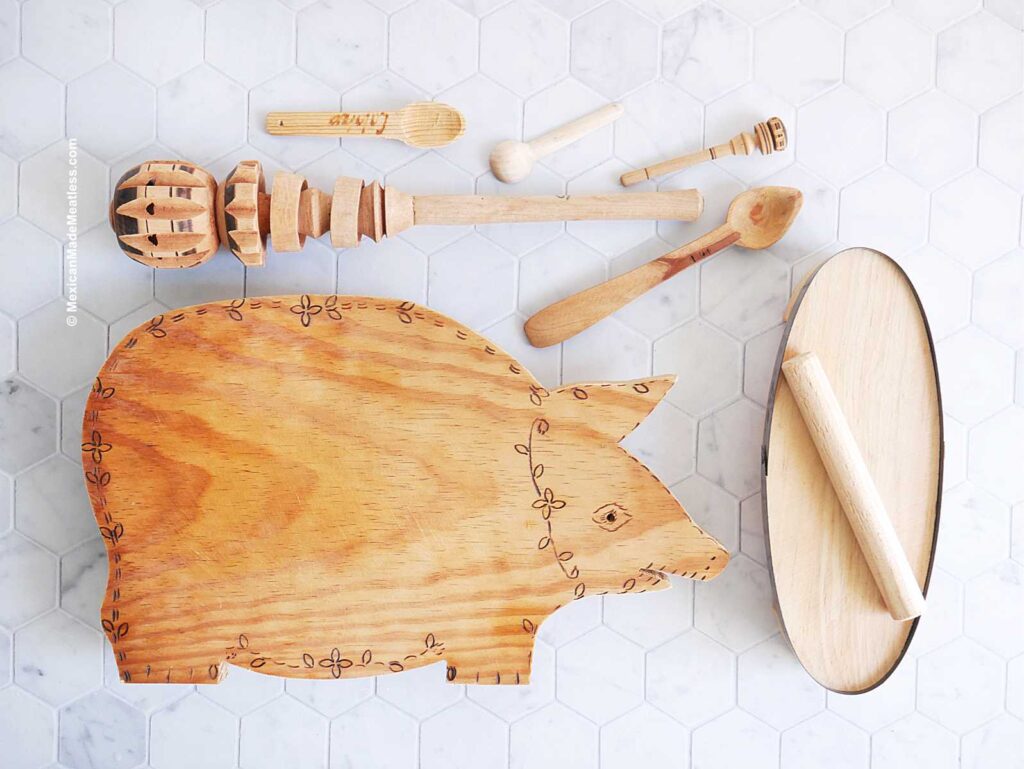
Wooden Mexican Cooking Utensils
The more traditional Mexican kitchens use wooden utensils and it’s really no surprise because they so many advantages. For example, they are highly economical compared to metal, plastic and rubber or plastic utensils.
Another great advantage is that they are extremely light and you don’t have to worry about melting them or scratching your pots and pans. Let’s not forget that wood is also biodegradable.
Additionally wood absorbs the flavors and scents of what it’s used for, so many traditional cooks believe that this aids in cooking more flavorful meals with their wooden utensils.
These wooden utensils play an important part of Mexican cooking in helping to stir, mix, flip, serve and eat.
Some of the more commonly used Mexican wood utensils are cucharas or wooden spoons in varying sized and uses, cucharon or ladle, espatula or wooden spatula, and tenedor or fork. Remember that bean mashers, molinillo, rolling pins can also be made of wood.
Looking for a Barro Plate Like Mine
Amigos so many of you ask me where I get my beautiful Mexican pottery from. The answer is Mexico. I know many of you can’t travel so I’ve put together a gorgeous collection from Amazon. Click the image below to go check it out.
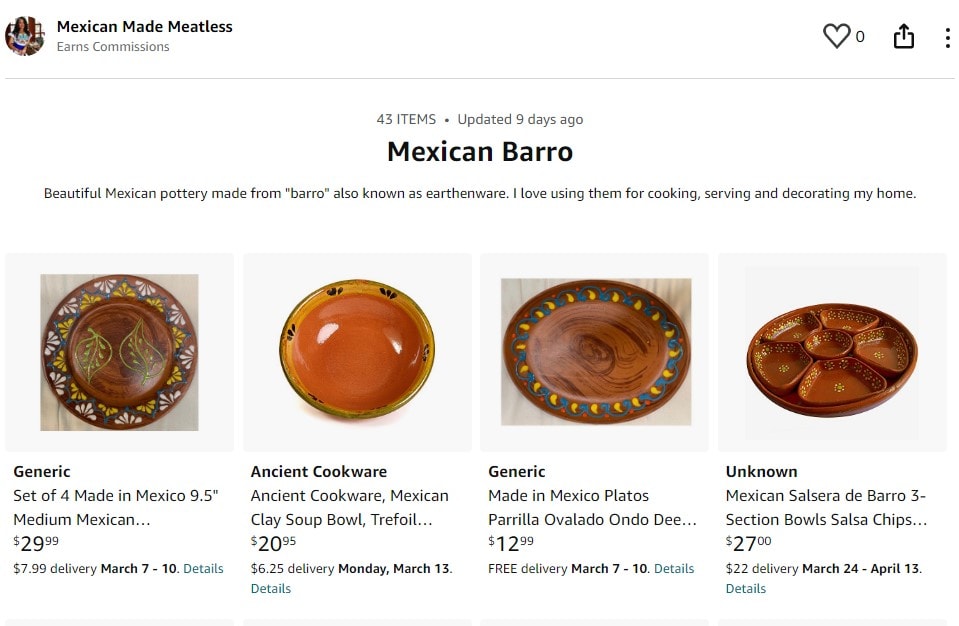
(Please notice that this article contains Amazon affiliate links, which may earn us a small commission if you make a purchase through them. Your support helps us continue to provide valuable content.)
A special gratitude and recognition to Jorge A. Cordova Garza for co-writing this article.
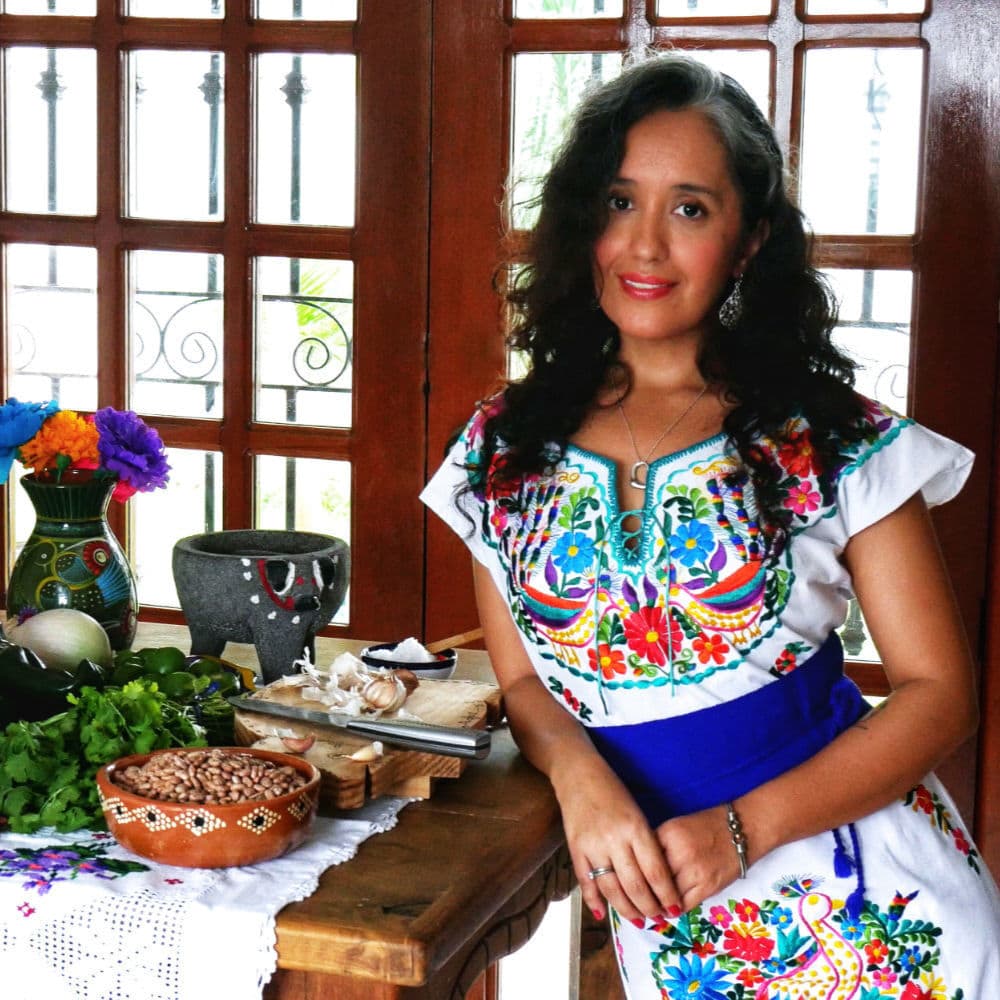
Gracias
I’m so happy you stopped by. If you have any questions or want to share which of these tools you own, do leave a comment. Muchas gracias, I appreciate you!
Nancy Lopez is a food blogger and author of the cookbook Mexican Tamales Made Meatless. Born in Mexico, raised in the US, and currently living in Southern Mexico, she has followed a meatless diet for almost 10 years. It is her passion and mission to share all she has learned about vegan Mexican cooking and vegetarian Mexican recipes. Mexican Made Meatless is a blog dedicated to preserving the authentic flavors of Mexican cuisine just without the meat. It’s a place to celebrate Mexican culture and all it’s delightfully delicious traditional foods. Read more…

